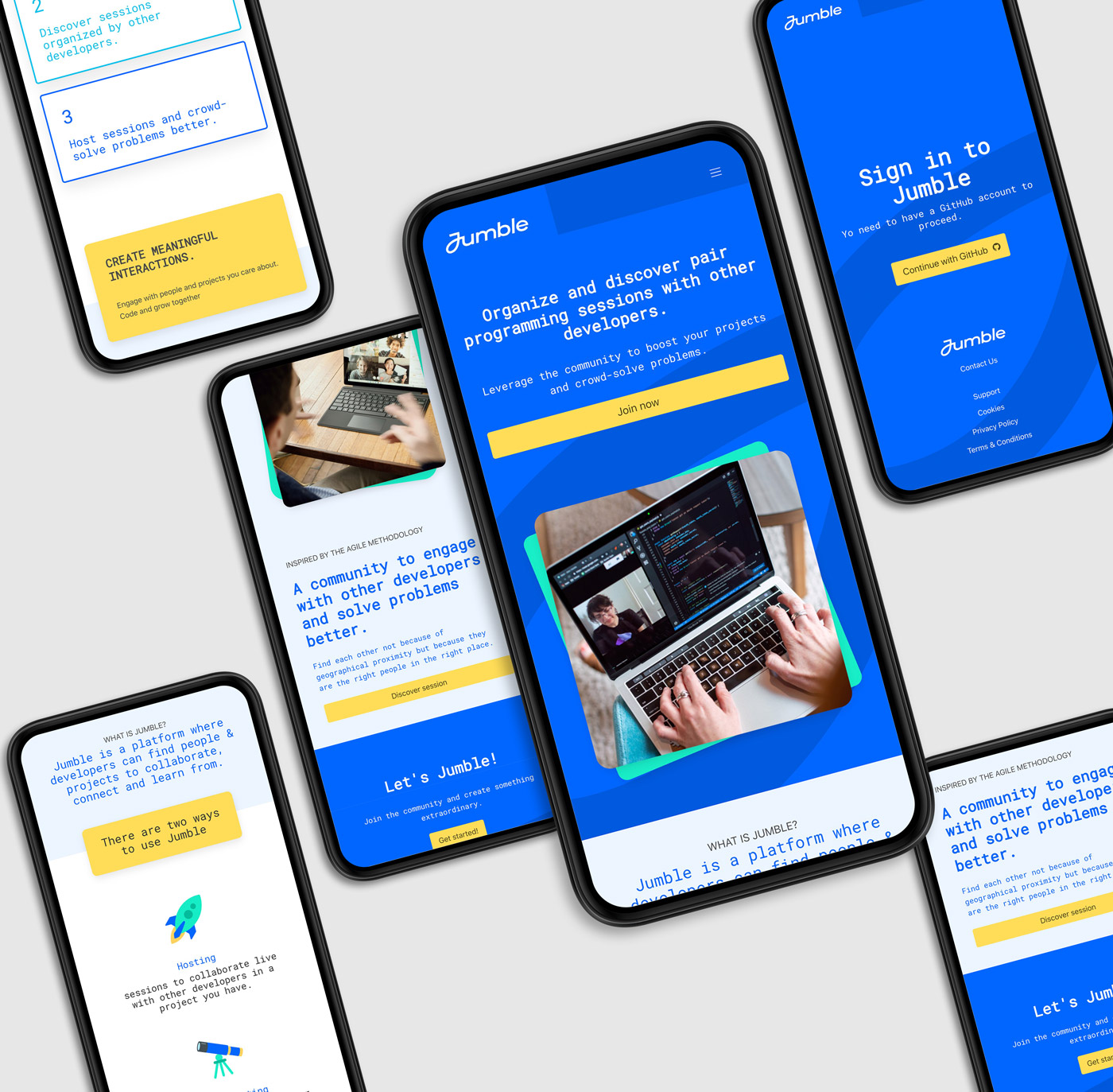VALUE PROPOSITION: Jumble is a collaboration platform that makes it easy to find and connect with programming partners, focusing on enabling spontaneous collaboration while integrating with existing tools.
Our focus was speed and simplicity over complexity. Every feature decision was filtered through one question: "Does this make it faster and easier to get help?"
Scope
- Real-time availability system
- Basic skill matching
- Quick session creation
- Easy login w/ Github
Out of scope
- Built-in video/code tools (teams already had preferences)
- Complex scheduling (focus on spontaneous collaboration)
- Team analytics (saved for future)
We had a 6-week timeline: The first two weeks focused on research and validation, where we dove deep into the problem space and tested basic flows with users before writing any production code.
This led to weeks three and four, where we built our core features: real-time availability, quick matching, and session creation, maintaining a sharp focus on reliability and speed.
Week five was dedicated to beta testing with 3 different teams, gathering crucial feedback while fixing bugs and polishing rough edges. In our final week, we concentrated on launch preparations, including thorough testing and documentation to ensure a smooth release.







